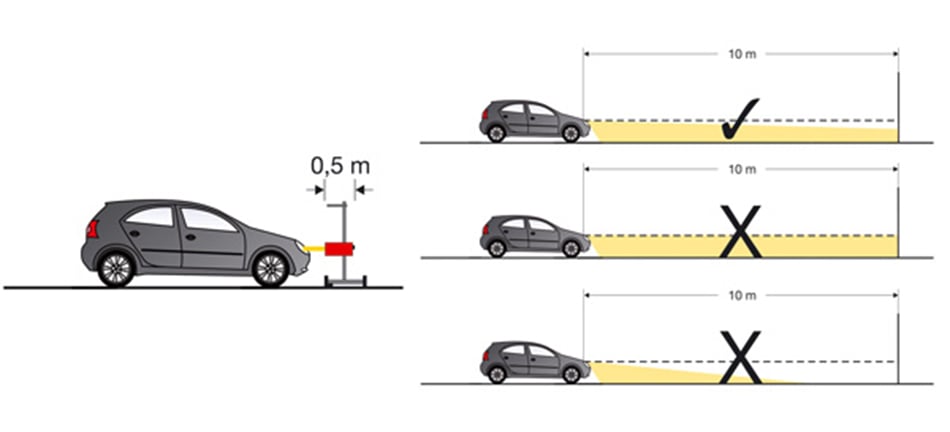Navigating High Altitudes with Your Vehicle
Soaring through the breathtaking landscapes of high-altitude regions can be an exhilarating experience. However, these elevated terrains can pose unique challenges for your car, affecting its performance and safety. Adjusting your car for high altitude is paramount to ensure a seamless and worry-free journey. In this detailed guide, we will delve into the intricacies of high-altitude adjustments and provide expert tips for optimizing your vehicle’s performance in these lofty realms.

Image: www.cannondigi.com
Understanding the Effects of High Altitude on Your Car
Reduced Air Density and Oxygen Levels
As you ascend to higher altitudes, the air becomes less dense, resulting in a significant decrease in oxygen levels. This oxygen deprivation can affect several crucial components of your car’s engine, particularly those that rely on combustion.
Fuel-to-Air Ratio Imbalance
The optimal combustion process in your car’s engine requires a precise balance of fuel and air. However, the reduced oxygen levels at high altitudes disrupt this balance, leading to an overly rich fuel-to-air ratio. This can result in reduced engine power, increased fuel consumption, and even engine damage.
The effects of high altitude on your car can be a daunting concern. However, with the right adjustments and some expert advice, you can prepare your vehicle for these lofty challenges. By understanding the impact of high altitude on your car’s performance, you can make informed decisions to ensure a safe and enjoyable journey in the mountains.

Image: autocareaids.com
Essential Adjustments for High-Altitude Driving
Fuel System Adjustments
To compensate for the reduced oxygen levels at high altitudes, it is essential to adjust your car’s fuel system. This involves increasing the fuel flow rate, allowing for a richer fuel-to-air ratio. Most modern vehicles have altitude-sensing fuel systems that automatically adjust the fuel flow based on atmospheric pressure.
Ignition Timing Advance
Another adjustment necessary for high-altitude performance is advancing the ignition timing. This allows the fuel to ignite earlier in the engine’s combustion cycle, taking advantage of the reduced air density. Ignition timing can be adjusted manually or through the use of an altitude-sensing ignition module.
Performing the necessary adjustments to your car’s fuel system and ignition timing can be a crucial step in ensuring optimal performance at high altitudes. By following these steps, you can help your vehicle cope with the challenges of thin air and reduced oxygen levels, improving its overall performance and drivability.
Optimizing Your Car’s Performance at High Altitudes
Driving Techniques
In addition to technical adjustments, adopting specific driving techniques can further enhance your car’s performance at high altitudes. These techniques include driving in lower gears to maintain higher RPMs, downshifting when climbing steep slopes, and avoiding prolonged idling, which can lead to carbon buildup.
Expert Advice for High-Altitude Driving
Seasoned drivers and automotive experts recommend a few additional measures to ensure your car’s safety and performance at high altitudes. These tips include regular engine inspections, paying attention to fuel efficiency, and using high-octane fuel to compensate for reduced oxygen levels.
By incorporating these expert tips and customized recommendations into your high-altitude driving routine, you can optimize your car’s performance and enhance its safety and reliability in the mountains. With a well-prepared vehicle and a mindful driving approach, you can confidently navigate any high-altitude journey.
Frequently Asked Questions on High-Altitude Driving
Q: What is the most common problem with cars at high altitudes?
A: Reduced engine power and efficiency due to the decrease in air density.
Q: Should I change my oil before driving at high altitudes?
A: No, changing your oil is not specifically necessary for high-altitude driving.
Q: Do turbocharged cars perform better at high altitudes?
A: Yes, turbochargers help maintain air intake at high altitudes, reducing the impact of altitude on engine performance.
Q: Is it necessary to adjust tire pressure for high-altitude driving?
A: Slightly reducing tire pressure can improve tire-to-road contact, but it’s crucial to consult your vehicle’s manufacturer guidelines.
Q: Can high altitude damage my car’s engine?
A: Prolonged driving at high altitudes without proper adjustments can lead to engine damage due to reduced lubrication and cooling.
How To Adjust Your Car For High Altitude
Conclusion: Ensuring a Safe and Enjoyable High-Altitude Adventure
Adjusting your car for high altitude is crucial for maintaining its performance and safety in the mountains’ unique conditions. By implementing the adjustments outlined in this guide and following expert advice, you can optimize your vehicle’s capabilities and ensure a smooth and enjoyable journey through breathtaking landscapes.
Are you interested in learning more about high-altitude driving? Share your questions and experiences in the comments below!